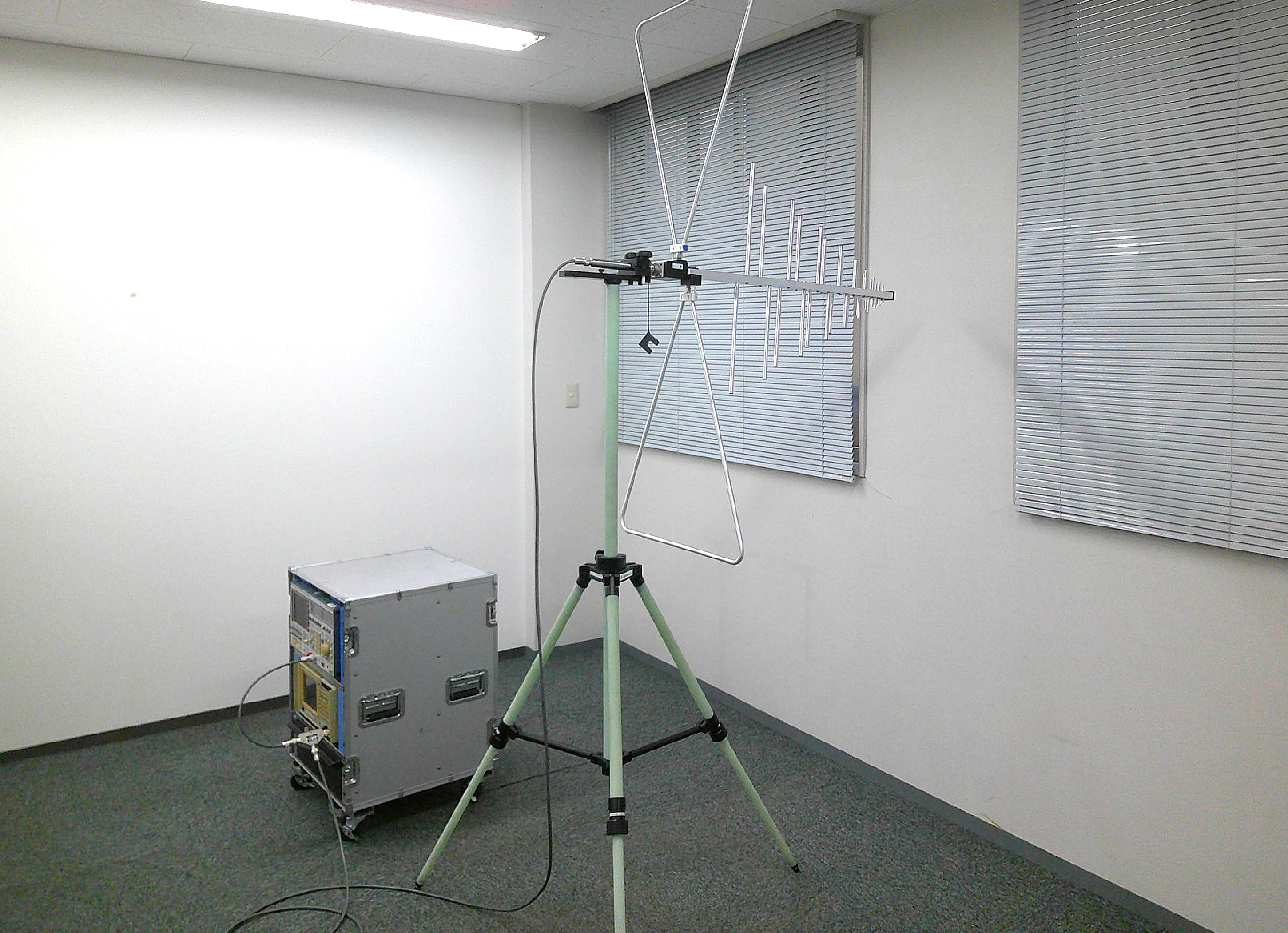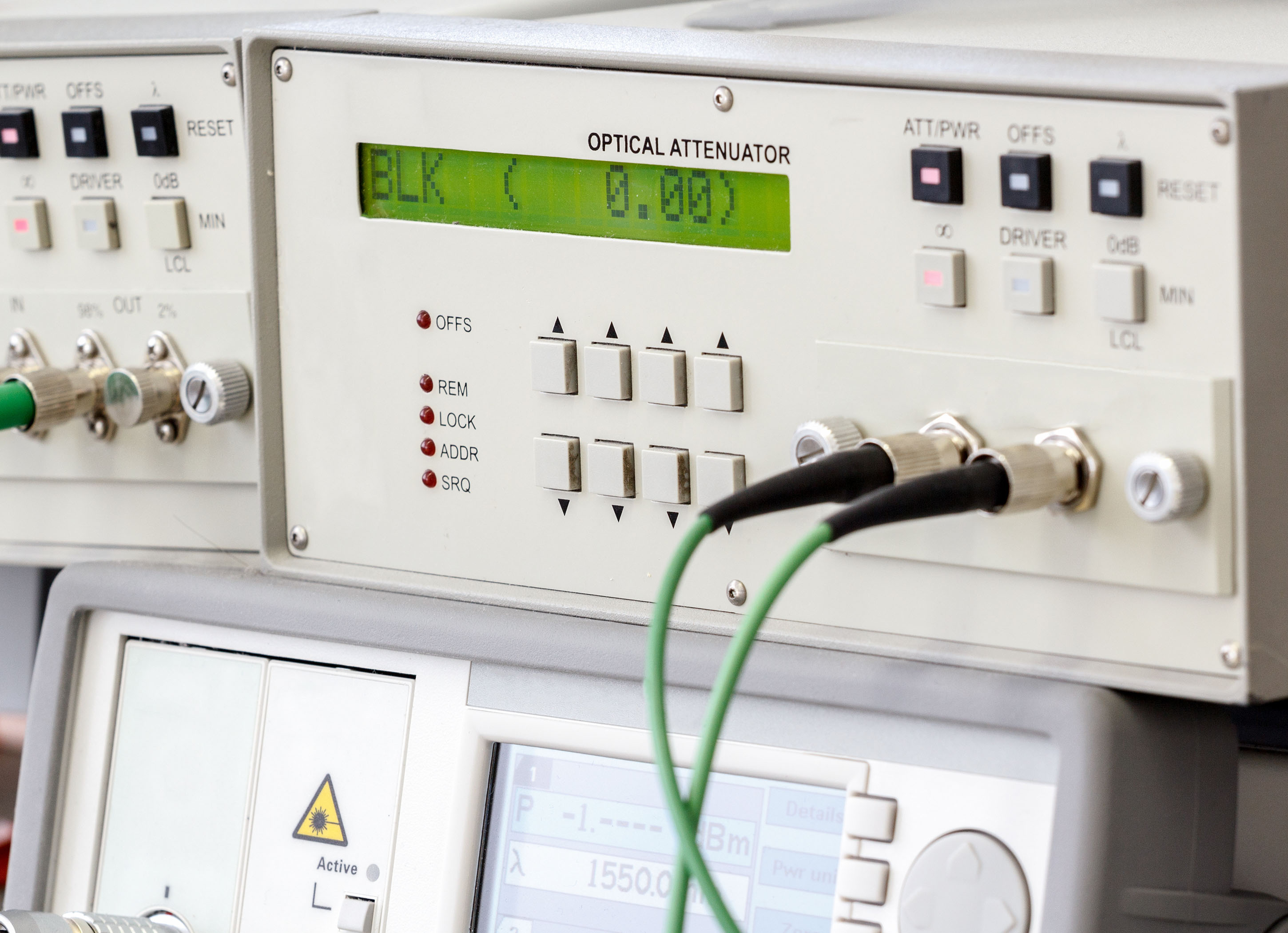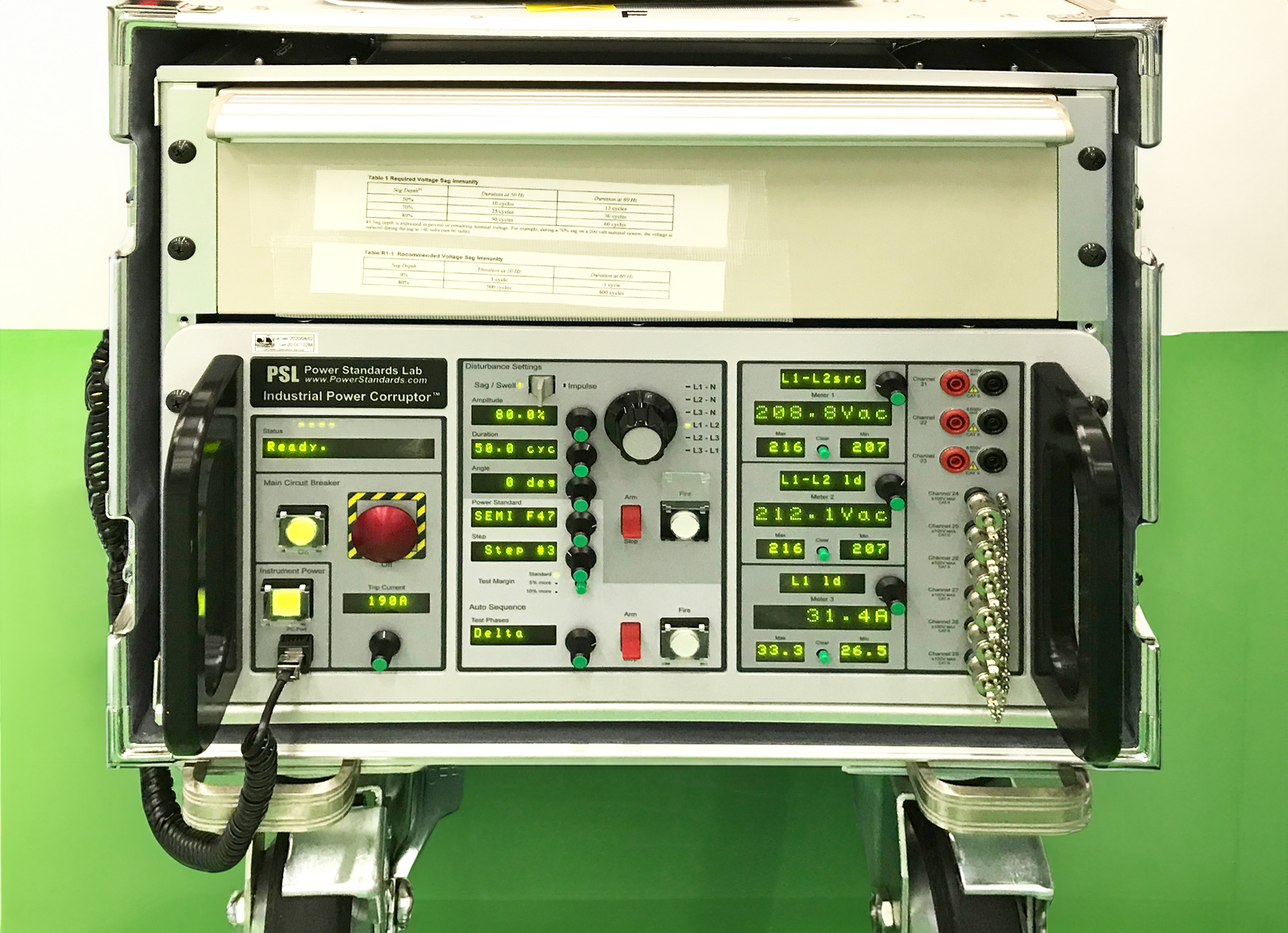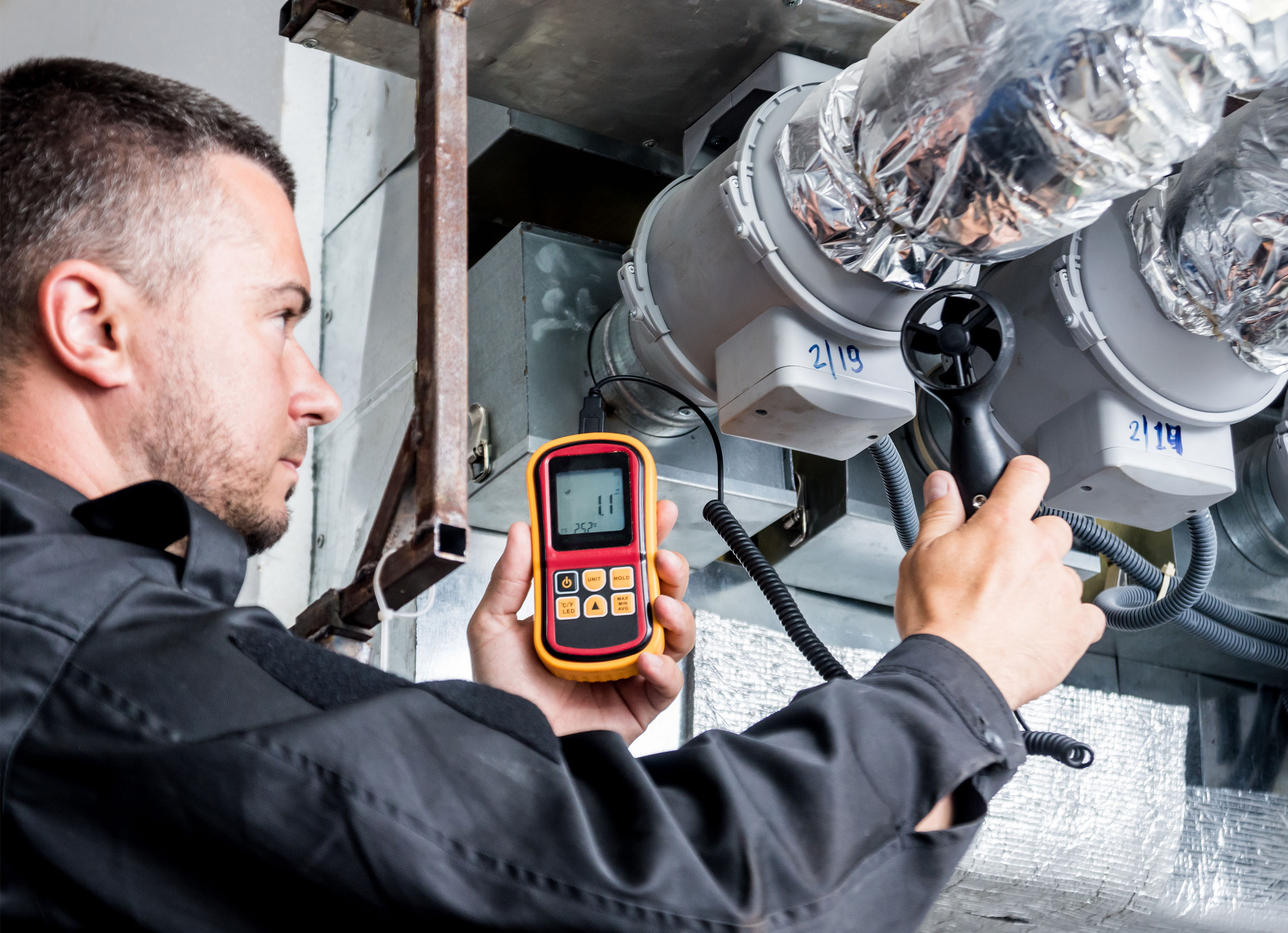All tests can be conducted in our laboratory, at the production site or at the overseas delivery destination.
EMC/FCC
Electromagnetic Compatibility (EMC)
We conduct tests according to the differing requirements (limits) of each country for both the electromagnetic interference (EMI, “emissions”) and electromagnetic susceptibility (EMS, “immunity”) of electrical machinery. Relevant international and EU standards include CISPR 11, CISPR 16, the EN/IEC 61000-4 Series and the EN/IEC 61000-6 Series.
In the United States, relevant standards include FCC Part 15 and Part 18. These emission standards for radio-frequency devices are issued by the Federal Communication Commission (FCC), which oversees the use of communications and radio.
In Japan, the Radio Law contains requirements for electric-field and magnetic-field intensity.


Electrical Testing
For semiconductor manufacturing equipment and industrial machinery, these tests are required under EN/IEC 60204-1 and, in the United States, NFPA 79 and SEMI S22. For components, tests based on IEC/EN/UL61010-1 and the like are available. Separately, we also conduct noise tests.
SEMI F47
Specification for Semiconductor Processing Equipment Voltage Sag Immunity: These are tests specified under SEMI for voltage sag immunity (power fluctuation).


SEMI S23
Guide for Energy, Utility, and Material Use Efficiency of Semiconductor Manufacturing Equipment: This guideline is specified under SEMI to cover the efficiency of utility consumption of semiconductor manufacturing equipment. Actual utility consumption must be measured and demonstrated.
SEMI S6
Environmental, Health, and Safety Guideline for Exhaust Ventilation of Semiconductor Manufacturing Equipment: This guideline is included in SEMI to govern environmental, health and safety concerns regarding the exhaust ventilation equipment used in semiconductor manufacturing equipment. These tests evaluate safety during normal operation, failure and maintenance of equipment that uses toxic, flammable and other hazardous gases and chemicals.


